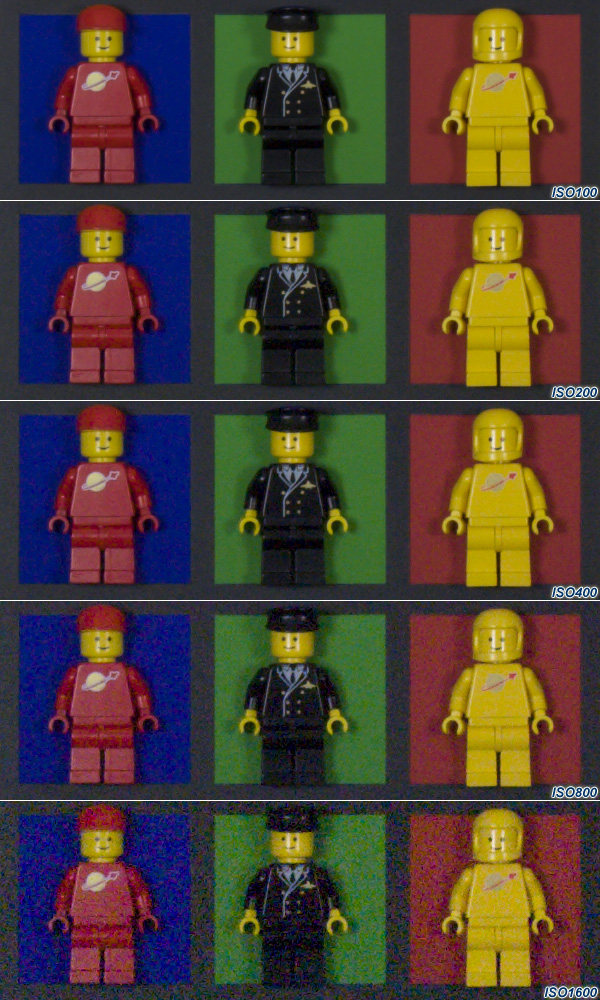|
Panasonic Lumix DMC-L10 - Review / Test Report - Technical Analysis |
|
DSLR Reviews -
DSLRs
|
|
Page 3 of 6
Resolution
Some of you may remember that the L10 was originally intended to serve as a test DSLR for the 4/3 lens tests. This plan has been abandoned due to promising perspectives of the micro-4/3 system (the Panasonic G1 will serve as a test bed soon) but the original decision was based on the fact that the L10 has a comparatively less aggressive AA-filter compared to the Olympus gang - reads: despite the same or at least very similar sensor the L10 is capable of producing (much) sharper results than the mighty Olympus E-3 - at least in RAW-mode. The L10 is already a little "old" compared to DSLR standards but it still keeps pace with the current competition. Naturally it shows that we're "only" talking about a 10mp DSLR here but compared to 12mp DSLRs the difference in effective resolution is rather academic in reality. Within its own scope the L10 has a very high if not exceptional pixel-to-pixel "sharpness" (unlike Olympus DSLRs).

The "formal" max. resolution provided by the Imatest toolkit is 2686 LW/PH but the LW/PH value (line widths per picture height) is given relative to the vertical resolution (also for the horizontal resolution). Thus a 4:3 camera has a numerical advantage over LW/PH figures for 3:2 DSLRs. The chart above shows the normalized values for the usual 3:2 format universe with a resolution equivalent to ~8.8mp.
ISO noise
Regarding its noise characteristic the L10 is a decent performer but it suffers a little at high ISO settings due the comparatively small 4/3 sensor dimensions (vs APS-C) DSLRs. Unsurprisingly there's nothing to worry about between ISO 100 and ISO 400. At ISO 800 the noise level increases quite a bit but with a little post processing the setting remains usable. ISO 1600 is way over the edge and should be avoided.
The chart below shows the results based on a RAW-file analysis:
 The JPEG output shows comparatively less noise than the converted RAW files but the increasing noise reduction towards high ISO settings comes at cost of resolution specifically at high ISO settings. The decrease of the measured noise at ISO 800 does probably originate in the more blotchy (coarse) noise characteristic - visually ISO 800 images are clearly worse compared to ISO 400. The rather low figures overshadow the fact that ISO 1600 remains plain bad for serious photographic purposes.
The JPEG output shows comparatively less noise than the converted RAW files but the increasing noise reduction towards high ISO settings comes at cost of resolution specifically at high ISO settings. The decrease of the measured noise at ISO 800 does probably originate in the more blotchy (coarse) noise characteristic - visually ISO 800 images are clearly worse compared to ISO 400. The rather low figures overshadow the fact that ISO 1600 remains plain bad for serious photographic purposes.
 The ISO performance needs to be seen within the context of the system. The 4/3 system has a 2x magnification ratio compared to full format DSLRs. In other words - it has a bigger depth-of-field at the same field-of-view equivalent to about ~2 f-stops. So in order to achieve the same depth-of-field as a full format DSLR you can shoot about 2 f-stops faster (e.g. 14mm f/4 on the L10 is equivalent to 18mm f/5.6 on a Canon EOS 50D (APS-C) or 28mm f/8 on an Nikon D700 (full-format)). Thus ISO 400 on a 4/3 DSLR is equivalent to ISO 1600 on FF DSLRs or ISO 800 on APS-C DSLRs (roughly). That is, naturally, assuming that you've fast enough lenses to play the game.
These are the lab results but I guess you're also interested in some samples taken in the real world. The first image series should give you an idea of the color noise at the specific settings.
The ISO performance needs to be seen within the context of the system. The 4/3 system has a 2x magnification ratio compared to full format DSLRs. In other words - it has a bigger depth-of-field at the same field-of-view equivalent to about ~2 f-stops. So in order to achieve the same depth-of-field as a full format DSLR you can shoot about 2 f-stops faster (e.g. 14mm f/4 on the L10 is equivalent to 18mm f/5.6 on a Canon EOS 50D (APS-C) or 28mm f/8 on an Nikon D700 (full-format)). Thus ISO 400 on a 4/3 DSLR is equivalent to ISO 1600 on FF DSLRs or ISO 800 on APS-C DSLRs (roughly). That is, naturally, assuming that you've fast enough lenses to play the game.
These are the lab results but I guess you're also interested in some samples taken in the real world. The first image series should give you an idea of the color noise at the specific settings.
If you move your mouse cursor over the image you can switch the the corresponding JPEG results
 ... and another series with a more detailed subject.
If you move your mouse cursor over the image you can switch the the corresponding JPEG results
... and another series with a more detailed subject.
If you move your mouse cursor over the image you can switch the the corresponding JPEG results

Verdict:
 | low ISO noise (ISO 100-200):
 |
 | mid ISO noise (ISO 400-800):
 |
 | high ISO noise (ISO 1600):
 |
|